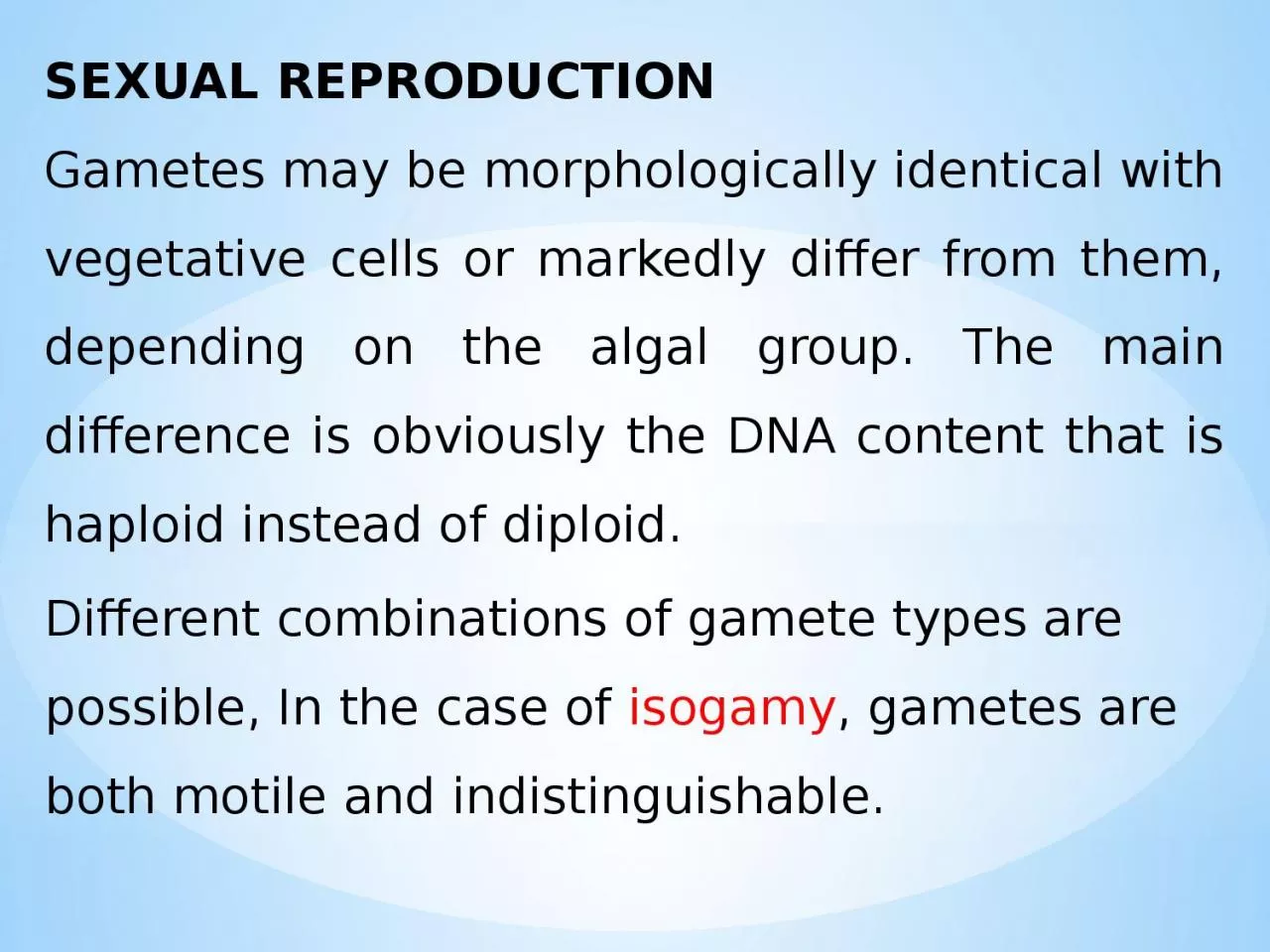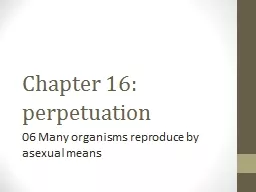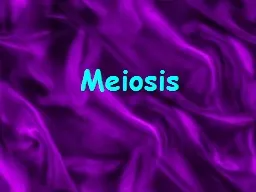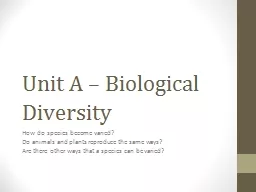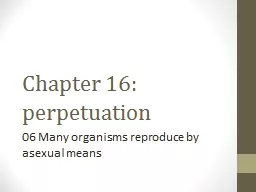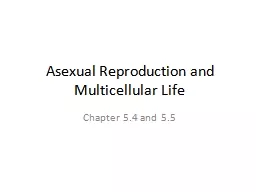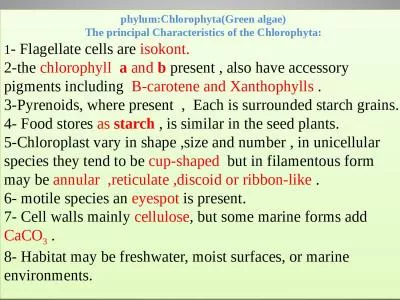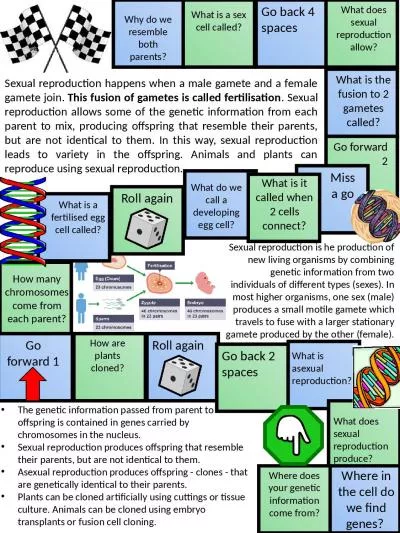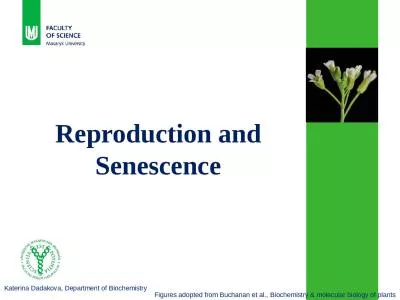PPT-SEXUAL REPRODUCTION Gametes may be morphologically identical with vegetative cells or
Author : lily | Published Date : 2022-06-28
depending on the algal group The main difference is obviously the DNA content that is haploid instead of diploid Different combinations of gamete types are
Presentation Embed Code
Download Presentation
Download Presentation The PPT/PDF document "SEXUAL REPRODUCTION Gametes may be morph..." is the property of its rightful owner. Permission is granted to download and print the materials on this website for personal, non-commercial use only, and to display it on your personal computer provided you do not modify the materials and that you retain all copyright notices contained in the materials. By downloading content from our website, you accept the terms of this agreement.
SEXUAL REPRODUCTION Gametes may be morphologically identical with vegetative cells or: Transcript
Download Rules Of Document
"SEXUAL REPRODUCTION Gametes may be morphologically identical with vegetative cells or"The content belongs to its owner. You may download and print it for personal use, without modification, and keep all copyright notices. By downloading, you agree to these terms.
Related Documents

